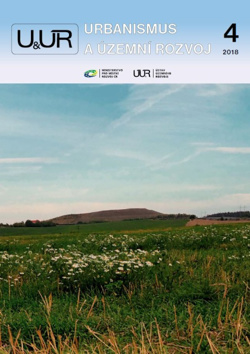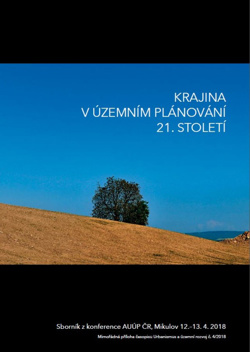

Prevention of suburbanization by market tools: the German policy of tradable planning permits, by Eliška Vejchodská
Tradable authorization was first used for environmental protection at the end of the 20th century, for air pollution control. Since then it has expanded to other fields of environmental preservation, including protection from excessive occupancy of land by construction. This article is about the German policy of tradable permits for planning. In Germany, this policy has gone through the testing stage as an optional complement of spatial planning and a tool for prevention of excessive land use by developers. As such, it seems to be a promising approach to suburbanization prevention.
Experience gained from the elaboration of a spatial study on the surroundings of Kladno, by Jitka Mejsnarová & Martin Tunka
More than 40 landscape studies on administration territories of municipalities with extended powers are currently in progress. Thanks to EU funding and the efforts of the Ministry of Regional Development, who succeeded in negotiating a subsidy, there is now a unique and extraordinary opportunity to study landscape in contexts wider than just the framework of the administration territories of single settlements, working on a more detailed scale than Spatial Development Principles. Guidelines to stipulate its purpose and content were provided by methodological instructions for the asssignment of landscape studies. Our article is based on a landscape study on the town of Kladno as a municipality with extended powers. Although the territories involved differ from each other greatly, so that variations in the elaboration of particular spatial studies are probable, the authors suppose that some of their findings will be of universal applicability. Topics deserving of special attention by spatial planners are explicitly mentioned.
Transformation in the core part of Central Bohemia between 1991 and 2018, by Milan Körner
The pivotal subject of this article is development and change of settlement structures in Prague and the surrounding region of Central Bohemia. As a consequence of obsolete physical planning documents (a Prague masterplan dating back to 2000 and the masterplan of Prague as a higher administration unit from 2006) and the low authority of these documents, there is a lot of uncontrolled suburban development today, mainly on the outskirts of Prague but also within the borders of the city administration. Due to the fact that, unlike in other countries, in the Czech Republic metropolitan regions and settlement agglomerations are not defined, the territory we address is that of the Development Area of Prague as delimited by Spatial Development Principles. It is a territory that differs from other Czech regions due to its very high economic power and a considerable increase in its population since 1990. This increase, by 46% in the suburban area outside Prague, has been reflected in changes in the structures of settlements. As to other locations in Central Bohemia, significant autonomy is typical of two development areas of slightly lesser importance: the region of Mladá Boleslav, of high economic potential, and the lowlands along the River Elbe, with Kolín and Kutná Hora as adjacent centres.
Once more on the participation (or non-participation) of associations for environmental protection in spatial and pre-construction proceedings, by Jan Mareček
Negative reactions to Act 225/2017, amending §70 of Act 114/1992 on Nature and Landscape Protection, have been numerous. Dr. Tereza Snopková of the Faculty of Law, Charles University, published an article on this matter in the 2/2018 issue of this journal. A necessary follow-up to her contribution are a few remarks in terms of unbiased and impartial understanding of the participation of environmental associations in spatial and pre-construction proceedings. A professional debate as a foundation for new legislation should follow.